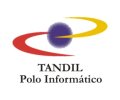Games For Facilitators
This session will introduce five interactive games that a facilitator can add to their toolkit for team and management training. The rationale for this session is that people learn best by embodying the learning, rather than just receiving knowledge at a head level. All participants will be immersed in the games; there are no observers. The key principles experienced from these games will be self-organization, collaboration and emergence.
I have used these games, and many others in public training sessions and with teams in company settings over the past few years. Due to the non-prescriptive nature of the games the outcomes can be surprising, to both facilitator and participants. That is part of their attraction for me. The games have their roots in the work of Augusto Boal, unless otherwise noted.
Warm Up: The Triangle Game
A fast-moving exercise to set the tone for the session. Participants move around the room attempting
to create equilateral triangles with other people who insist on doing their own thing! It is chaotic,
messy and frustrating… until they figure out how to resolve it. I never quite know the direction this
game is going to go in, but during the debrief participants often identify many Agile parallels.
10 minutes
Ball Point Factory
A frantic game consisting of throwing lots of balls around to earn points. The team/s learn how to
improve through regular reflections and tracks both its estimated and actual velocity during the
course of the game. Movement becomes calmer as the game progresses and some interesting patterns and
rhythms will form.
Note: I learned this game from Stacia Broderick, who learned it from Boris Gloger… I don't know its origin.
20 minutes
Spaghetti
We create a tangled knot of 8-10 people through a process of crisscrossed hand-holding. It feels awkward
and uncomfortable. The other participants act as analysts and managers. A vision of an open circle is
offered, with everyone standing comfortably. A constraint is set that in order to reach that state the
hand-holding must not cease. The game proceeds in three stages:
1. The analysts are asked to write a spec: a set of steps the team members have to take to resolve the
problem. Team members do not move.
2. The managers are asked to give instructions to each team member, who will move if told. Team members
not instructed should wait their turn.
3. (Of course) the team is asked to resolve the problem itself. What happens next is an almost text-book
example of self-organization: a collaborative, reflective, emergent behavior occurs and the problem is
quickly resolved.
20 minutes
Help Me To See It
A storytelling game. Team members stand or sit in a circle and create a story by building on what has
been said before. Opportunities to challenge the story's direction, to unwind, and rethink plot and
characters are introduced as the story progresses. This is a deeply collaborative exercise which calls
on the participants' abilities to listen and challenge. The stories created have a depth of plot and
character that is often surprising. Sometimes they are also very, very funny. The process illustrates
the strength of emergent design, and the power of simplicity over cleverness.
Note: I developed this game with Matt Smith; it is a development of an Improv exercise.
30 minutes
Wind Down: Quiet Counting
In a circle have the group close their eyes, be silent and just breathe for a minute or to, sensing
the others in the group. Ask the group to count to ten, as a group. Anyone can start, anytime they
chose. Someone says "one", then someone else says "two". If two people speak at once the group has
to start again from "one". This exercise fosters listening skills, empathy and respect; it is a nice,
calm way to end any training session. It needs no debrief.
10 minutes
Workshop / Taller
Idioma: Inglés
Día: 22/10
Horario: 16:30 - 18:00
Sala: Cascada II
Día: 23/10
Horario: 14:30 - 16:00
Sala: Cascada II
























